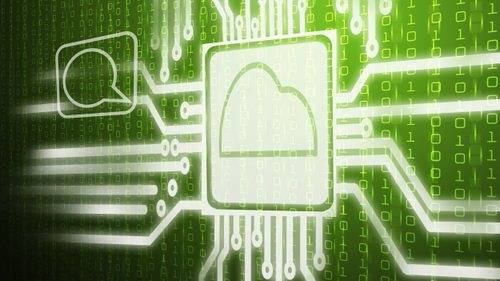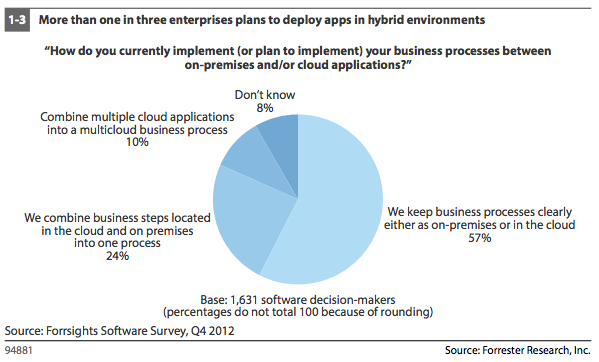
As fantastic as cloud computing sounds, one of the greatest obstacles to its adoption is all the software that isn’t yet in the cloud. Which is to say, virtually all software used by most enterprises of reasonable size. While the industry anticipates the problems inherent in connecting the dots between services running on different clouds, today’s enterprise must fixate on connecting its crufty old software assets with the cloud.
It won’t be easy.
But it will be critical. According to Forrester, “Hybrid enterprise IT landscapes have become the norm,” with “Data and application logic… spread across different packaged and custom-built applications on premises, on managed infrastructures, and in the public cloud.” This complexity is only going to get worse.
A Brave New World
While developers have embraced the cloud with gusto, they too quickly stumble into pesky old world requirements like security and compliance. However much a developer may want to march boldly into the future of computing, an enterprise’s first obligation is to software and services that are secure and compliant with a host of regulations. It’s like having cold water dumped all over one’s dreams.
Indeed, as Ed Laczynski (@edla), SVP of Cloud Strategy & Architecture at DataPipe, notes:
Chris Hoff (@beaker), VP of Strategy and Planning at Juniper Networks, echoes Laczynski’s concerns, identifying “the shackles of legacy security/compliance colliding with the next iteration of platforms” as the major barrier to integration with cloud platforms.
Is It Really A Security Thing?
But is security really the biggest problem? It’s absolutely a big issue, but arguably a larger issue is the difficulty of translating enterprise business rules to cloud systems, as PBSI’s Natalie Kilner Hughes argues. According to Forrester, enterprises are at varying stages of running business processes in a hybridized world of cloud and legacy apps:

Kilner’s solution is to turn to emerging technology platforms that automate migration of legacy cloud to the cloud, “saving up to 80% of the cost versus rewrite or replace options while ensuring functional equivalence.”
While this sounds fantastic, my hunch is that many CIOs are going to be reluctant to trust such a migration tool. As LogicWorks’ Jake Gardner suggests, a lack of in-house expertise “or the historical data to prove out the idea of moving” an application leaves enterprises unable to “properly project the savings,” causing them to hesitate to move a legacy application to the cloud.
They might, however, be willing to turn to the ESB (enterprise service bus) technology they likely already have running in house. The catch is that they may not fully trust ESBs, either, given that they’ve long promised more than they’ve actually delivered.
Still, more modern ESBs like MuleSoft could prove to be more productive. MuleSoft bills itself as a legacy-to-cloud integration expert, and has been doubling revenues every year for several years, suggesting that enterprises are turning to it, and probably others like it, for help.
Solving The Operations Mismatch
At its heart, the problem with cloud integration for developers is operational in nature. As James Urquhart (jamesurquhart), vice president of Product Strategy at Enstratius (acquired by Dell), posits:
For developers, the challenges are largely operational issues, not architectural. Differences in images, DNS, load balancing, etc. Of course, integration of cloud with existing IT is almost always an app and data integration problem, though monitoring also problematic.
There are solutions for this problem. Enstratius, for one, enables integration at the application level. It lets developers focus on building her application, while Enstratius takes care of running it on multi-cloud architectures. But for those enterprises that are less concerned with management and governance and are initially concerned with integration legacy applications with modern clouds, the real trick is to integrate legacy applications and their governing rules.
There’s no easy fix for this. Part cultural, part technical in nature, the difficulty of embracing the cloud without leaving enterprise legacy systems behind is a big problem. Fortunately, it comes with a big cash prize for whichever company solves it first.









